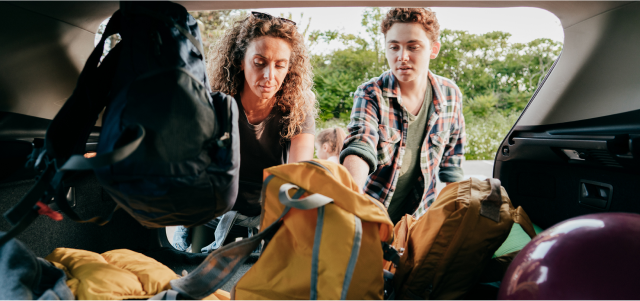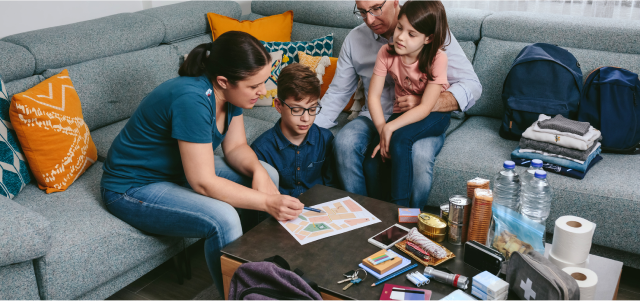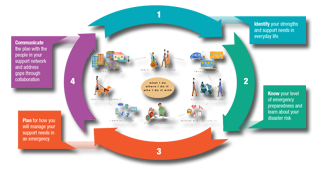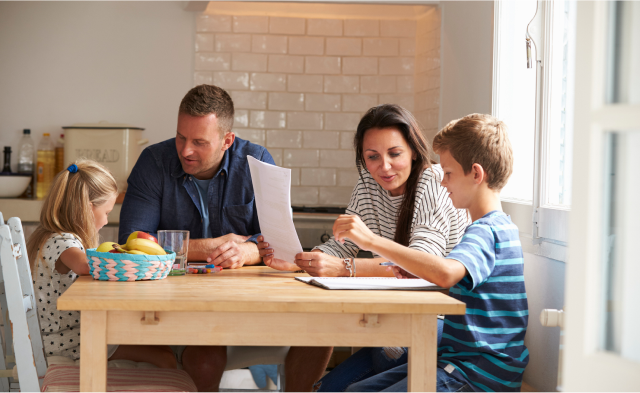
![]()
Hold a Bushfire planning meeting with your household
Put the kettle on, and set a meeting, the best plans are made together!
To complete this week’s challenge, it will be important for you to sit down with your household and have a discussion about your plans for bushfire.
Refer to the ‘MY BUSHFIRE PLAN’ section of the TFS Bushfire Safety Guide, and/or the online version.
Work together with your household to answer the following questions below:
Bushfire Planning - Nigel & Bernadette

What are your household’s triggers to leave early?
Triggers to leave during or before a bushfire will differ in each household.
Using the Australian Fire Danger Rating system, the TasALERT website and staying tuned to ABC radio are always good places to start.
What will you take?
Working out what to take during an emergency is always tricky.
That’s why we recommend you to build an emergency kit and create a list of additional items you will need.
Check out page 9 of the TFS Bushfire Safety Guide for further advice and look out for Challenge 4 in a couple of weeks!

Where will you go?
Leaving early is always the safest option during a bushfire incident.
We encourage households to seek out friends and family as your first option when leaving a bushfire affected area.
That way, you can sit back with a cuppa and wait the fire out!
We know it might not always be that easy, and that’s why the TFS has Community Bushfire Protection Plans in place across many Tasmanian communities to help you make more informed decisions, such as identifying Evacuation Centres and Bushfire Places of Last Resort (Nearby Safer Places).
Community Bushfire Protection Plans
Be aware that Bushfire Place of Last Resort are just that – a last resort!
Do you need to consider people at increased risk, such as elderly or people with a disability?
We are all the experts in our own life, so to ensure we can act early during a bushfire incident, we need a fit for purpose bushfire plan.
TFS and SES work closely with initiatives like Collaborating for Inclusion to assist your specific circumstances using a person-centered emergency preparedness approach.
Gary Matthews - "Disempowering"
More information and resources, such as the Capability Wheel tool are available on the SES Tasmania's Person-centred Emergency Preparedness website.
Consider who can assist you in developing a bushfire plan that works for you, such as friends, family, support providers or carers.


What role will each person play?
Don’t forget, responsibility during an emergency situation is always important. Within reason, no matter the age or ability of a person in your household, they can play a role.
The last thing you want is members of the household feeling lost or confused in the situation. If a person has a key role to play, they will be purposeful to the household’s success in leaving safely and early.
Use this time to discuss with each person what they believe they can be responsible for during an emergency.
It is important to remember that no matter whether you’re a part of a big or small household, or even if it is just yourself, it’s important to touch base with family, friends and your neighbours to ensure they know your bushfire plan. This will ensure you have help where you need it!